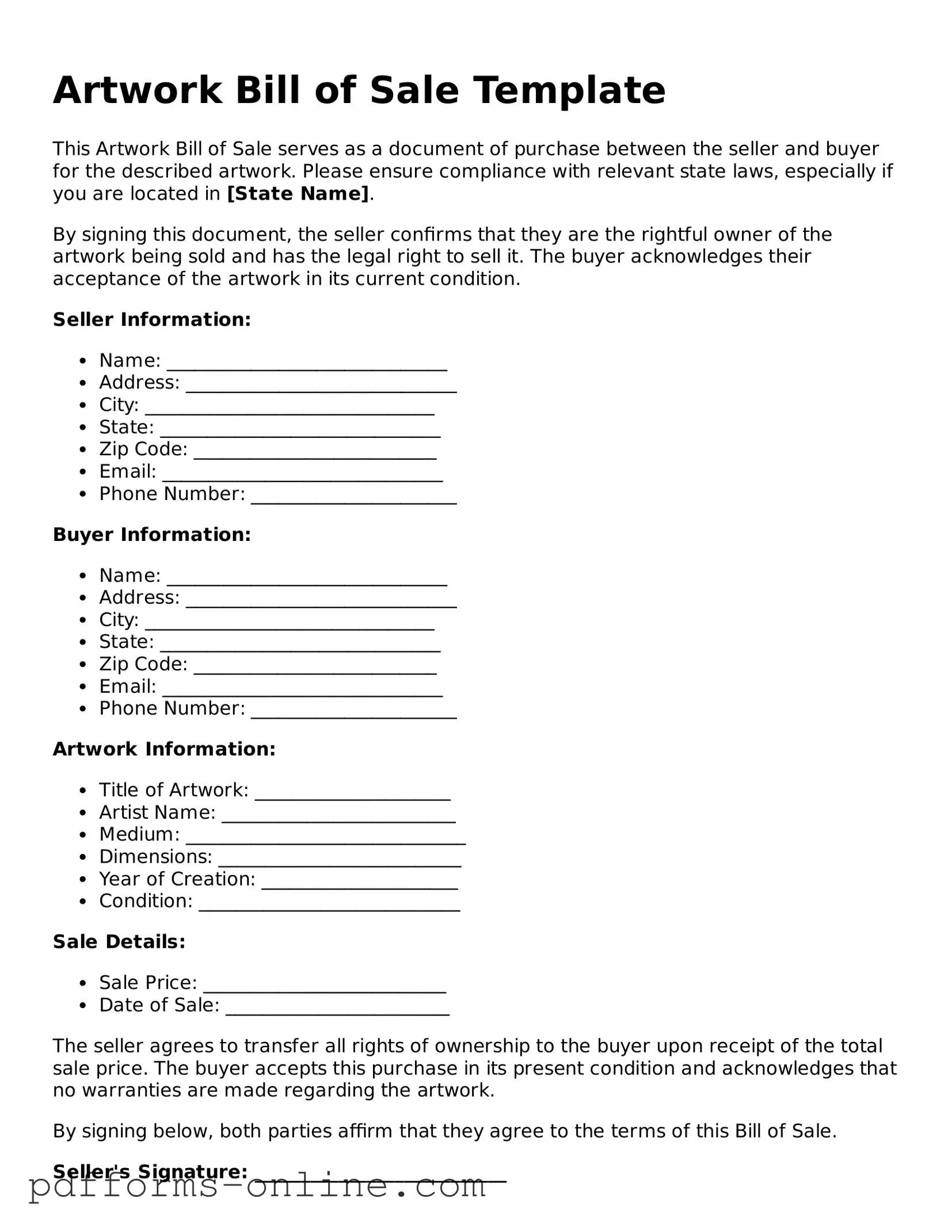The Artwork Bill of Sale form shares similarities with a Vehicle Bill of Sale. Both documents serve as proof of transfer of ownership from one party to another. In the case of a vehicle, the document typically includes details such as the make, model, and vehicle identification number (VIN). Similarly, an Artwork Bill of Sale includes information about the artwork, such as the title, artist, and any identifying marks. Both forms protect the rights of the seller and the buyer, ensuring that the transaction is legally recognized.
Another document that resembles the Artwork Bill of Sale is the Real Estate Purchase Agreement. Like the Artwork Bill of Sale, this agreement outlines the terms of a sale, including the purchase price and the parties involved. It also specifies any conditions that must be met before the sale is finalized. Both documents serve to formalize the transaction and provide a clear record of the agreement, which can be referenced in the event of disputes.
The Equipment Bill of Sale is another similar document. This form is used when transferring ownership of equipment, such as machinery or tools. It includes details about the equipment, including its condition and any warranties. Much like the Artwork Bill of Sale, it serves to protect both parties by documenting the sale and ensuring that the buyer receives what they are paying for.
A Boat Bill of Sale is also comparable to the Artwork Bill of Sale. This document is used to transfer ownership of a boat, detailing the boat's specifications and condition. Both forms provide essential information about the item being sold and confirm the transaction. They also serve as evidence of ownership, which can be important for registration and insurance purposes.
The Gun Bill of Sale shares characteristics with the Artwork Bill of Sale as well. This document is used to transfer ownership of firearms, detailing the make, model, and serial number of the gun. Both documents ensure that the sale is documented and legally binding, protecting the interests of both the seller and the buyer. They also often require the seller to confirm that the buyer is legally allowed to own the item being sold.
A Business Asset Bill of Sale is another document that functions similarly. This form is used when selling business assets, such as furniture or equipment. It includes descriptions of the assets and their value, similar to how an Artwork Bill of Sale details the artwork being sold. Both documents help clarify the terms of the sale and provide a record for future reference.
In situations where legal documentation is required for the transfer of ownership for various valuable assets, including artwork and vehicles, resources like the onlinelawdocs.com/ can provide essential templates and information to ensure compliance with state laws and regulations.
Finally, a Domain Name Bill of Sale is akin to the Artwork Bill of Sale. This document facilitates the transfer of ownership of a domain name from one party to another. It outlines the domain name, the parties involved, and the agreed-upon price. Both documents serve to formalize the transfer and protect the rights of both parties, ensuring that the transaction is legally recognized and documented.
